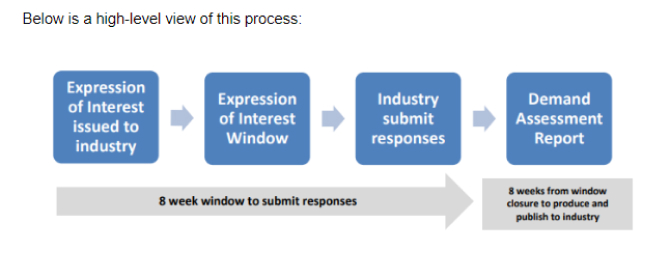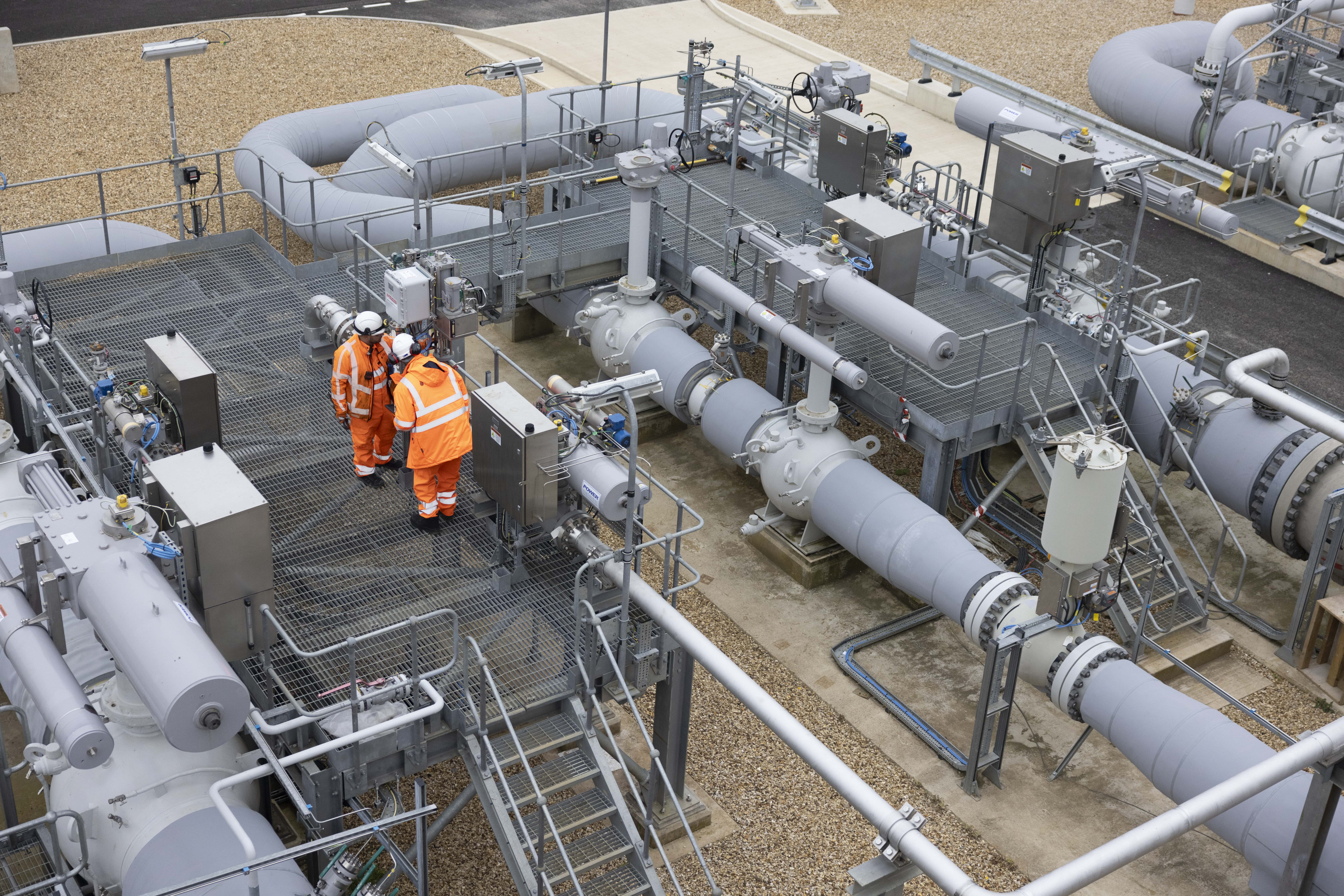connections
Reserving capacity
How to reserve capacity on the NTS
Entry or exit capacity can be reserved on the National Transmission System (NTS) by developers, gas shippers or distribution network operators (DNOs). You can reserve capacity in advance, while your project is being planned and developed. Such projects could include new business parks or industrial plants that will require a supply of gas from the NTS, or new gas storage or production projects that will need to inject gas into the NTS.
Firm NTS capacity can be reserved through the Planning and Advanced Reservation of Capacity Agreement (PARCA) process. A PARCA is a bilateral contract that allows you to reserve entry and/or exit capacity while your project is in development.
For interconnection points, capacity can be allocated using the Capacity Allocation Mechanism (CAM) incremental process.
Planning and Advanced Reservation of Capacity Agreement (PARCA)
Reserving capacity on the NTS
The PARCA process allows you to reserve capacity, but it does not provide you with a connection to the National Transmission System (NTS). If you need a new connection to the NTS, you will need to go through the connection process. The capacity reserved will need to be allocated to a nominated NTS User before it can be used. A reserving and nominated NTS User can be the same entity.
How a PARCA works
The first step is to submit a PARCA application, requesting the capacity you will need. We will use the information provided to determine how and when the capacity requested can be delivered.
The PARCA arrangement helps you and National Gas to progress projects in parallel. It also assures you that capacity has been reserved, with the option to buy it later. A financial commitment to the capacity (allocation of capacity) itself is only required once you and National Gas are relatively sure that the projects will proceed.
The capacity reservation and connection processes are separate, but they can become dependent on each other. To prevent stranded capacity, we won't allocate reserved capacity where a new or modified connection is required, unless a full connection offer (FCO) has been reached and accepted. Typically, it can take between 6-12 months to receive and sign an FCO, so the Application to Offer (A2O) process (if required) needs to be started at least 12 months before the capacity allocation date defined in the PARCA contract.
The PARCA process may take up to seven years from application to the physical build of any capacity.
How to apply
All PARCA applications are submitted via the Gas Customer Hub. You will need to register for access to the Gas Connection Portal to obtain a cost estimate and apply for a PARCA. Your cost estimate will provide a Capacity Indicator. Alternatively, you can obtain a Capacity Indicator by contacting National Gas at [email protected]. Please refer to our Guide to Capacity Indicators.
After you have submitted a PARCA application, we will check it for technical competency and send you an invoice for the PARCA fee.
We will also verify your Capacity Indicator and confirm whether it is Red, Amber or Green. This will determine how long it will take to complete your PARCA phase 1 report.
PARCA guidance and documents
The following documents will provide you with a more in-depth understanding of the PARCA process, particularly the PARCA Customer Guide, and the application form needed to start the PARCA process.
PARCA notices
Current PARCA notices
Further notices
Knottingley Power Station
No open or close notice as application submitted under Keadby II Exit window.
Capacity Allocation Mechanism (CAM)
Reserving capacity at interconnection points
The Capacity Allocation Mechanism (CAM) network code applies to interconnection points and may apply to entry and exit points from/to third countries. The CAM incremental process allows capacity to be allocated for interconnection points. This is either achieved through annual auctions or via the Alternative Allocation Mechanism, which is an interconnection point PARCA (Planning and Advanced Reservation of Capacity Agreement).
How the annual CAM incremental process works:
- Every two years, National Gas produces and publishes an “Expression of Interest” notice to industry for shippers to participate in the CAM incremental process.
- The Market Demand Indication window is opened for eight weeks.
- In this window, those wishing to participate are required to submit non-binding Expressions of Interest, stating their requirements.
- Once these Expressions of Interest are received by National Gas, they are evaluated.
- If all of the necessary information has been received and submitted, plus the relevant demand indication fee has been paid, the demand indication will be deemed competent and included in the Demand Assessment Report.
- Following the end of the Expression of Interest window, National Gas has eight weeks to complete the Demand Assessment Report to confirm the required capacity for each of the interconnection points (BBL, Interconnector, GNI and PLT).
- This report is then issued to industry and to the interconnection points accordingly, with the shippers then requested to pay the application fee for the capacity.
The report will include, but not be limited to, the following information:
- A conclusion on whether to initiate an incremental capacity project.
- The aggregated non-binding demand indications received during the latest demand indication window.
- The aggregated non-binding demand indications received before the latest demand indication window.
- The aggregated non-binding demand indications received after the latest demand indication window closed, but that will still be considered at this time.
- An assessment of the volume, direction and duration of the demand for incremental capacity at the common interconnection points, with each adjacent entry-exit system.
- The types and, where available, the aggregated size of the conditional demand indications received.
Below is a high-level view of this process:

For more information, please refer to the documentation below.
Rationale for Capacity Allocation Mechanism (CAM)
To harmonise the development process for incremental capacity, rules for incremental capacity have been included in the network code on Capacity Allocation Mechanism (CAM NC) in UNC European Interconnection Document (EID) Section E. An amended version was approved by the EU Member States in October 2016 and came into force on 6 April 2017.
The process has several phases, including certain requirements that need to be fulfilled before an incremental project can be initiated, based on market demand and new capacity requirements.
- The market demand assessment will be conducted in accordance with Article 26 of the Official Regulation (EU) 2017/459 of the amended CAM code, and covers how the market will signal to Transmission System Operators (TSOs) a potential need for capacity beyond the unsold technical capacity available.
- The project design covers technical studies and a TSO-led public consultation on the proposed incremental project.
- National Regulatory Authority (NRA) approval covers the finalisation of the project proposal followed by an NRA decision on whether the project goes ahead.
- The allocation mechanism can be via the standard annual yearly auctions at interconnection points, or an alternative mechanism can be proposed under the project design.
- National Gas Transmission intends to use the alternative mechanism to follow the existing Planning and Advanced Reservation of Capacity Agreement (PARCA) process as much as possible.
- Any allocation or reservation of capacity will be subject to an economic test.
- The CAM process does not cover rules for gaining planning consent or for construction. However, these remain a necessary part of the process for creating incremental capacity and are considered as part of the process rules, where appropriate.

